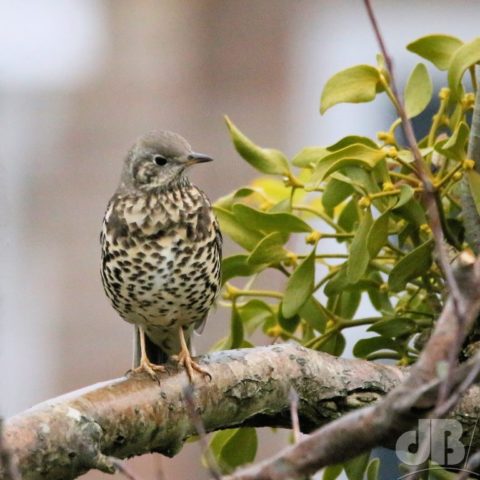Mistle Thrush (Turdus viscivorus) in our mistletoe-infected rowan tree. I was poking the camera out of the bedroom window hoping to catch sight of the Goldcrest (Regulus regulus) calling from our bushes when a male Blackbird and this Mistle Thrush had an altercation and the Thrush ended up perched in the tree right in front of me.
He’s been around for a couple of weeks now, but spends his time hiding in a neighbour’s tree which has lots of berries and lots more female mistletoe (with berries), our rowan has already had all of its offspring predated by birds and the mistletoe growing on our tree, as you can presumably see, is male, so no berries.

We are assuming it’s the same Mistle Thrush that roosted in their tree last winter; life expectancy is three years, but can be much longer, and, of course, much shorter. They are a resident species and territorial they will scream their cackling call and fend off other thrush-type birds that try to feed on their berries. We hadn’t seen nor heard the bird since last winter, so presumably it was active elsewhere in the area through Spring and Summer and into the Autumn.
Aside from the more raucous call and song that sets it apart from the dulcet tones of the Song Thrush and even the Blackbird, the bold, brown spots on the cream breast of the Mistle Thrush do not have the “heart” or “arrow” shape of those on Song Thrush. The BTO has a nice video describing the distinctions between Song and Mistle.